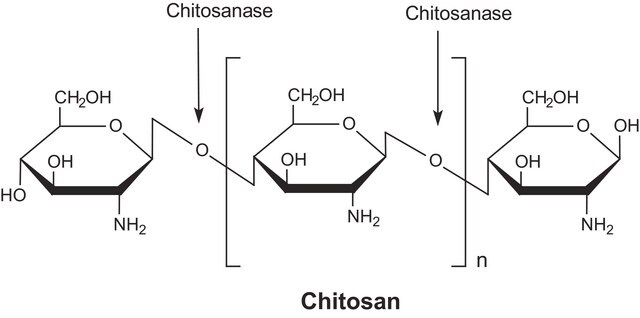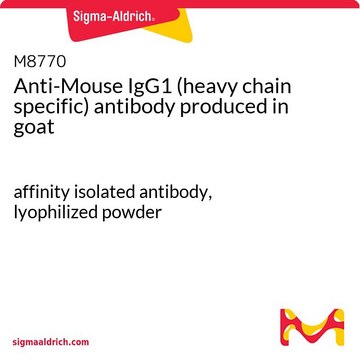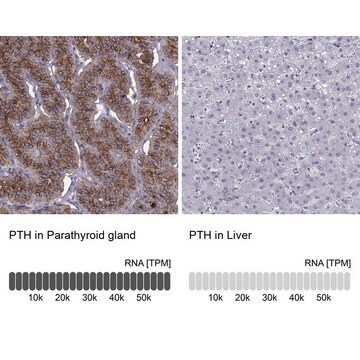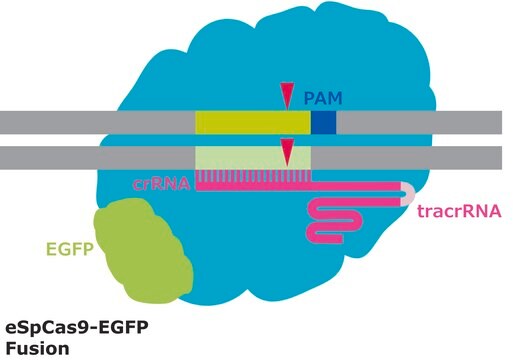17-10199
ChIPAb+ HDAC1 Antibody, rabbit polyclonal
from rabbit
About This Item
ICC
WB
immunocytochemistry: suitable
western blot: suitable
Productos recomendados
biological source
rabbit
Quality Level
clone
polyclonal
species reactivity
human
species reactivity (predicted by homology)
hamster (based on 100% sequence homology), canine (based on 100% sequence homology), mouse (based on 100% sequence homology), rat (based on 100% sequence homology)
manufacturer/tradename
ChIPAb+
Upstate®
technique(s)
ChIP: suitable
immunocytochemistry: suitable
western blot: suitable
NCBI accession no.
shipped in
dry ice
General description
The ChIPAb+ HDAC1 polyclonal set includes the HDAC1 antibody, a Normal Rabbit IgG, and control primers which amplify a 88 bp region of ChIP Primers p21. The HDAC1 and negative controls are supplied in a scalable "per ChIP" reaction size and can be used to functionally validate the precipitation of HDAC1-associated chromatin.
Immunogen
Application
Representative lot data.
Sonicated chromatin prepared from untreated or UV treated (6 hrs, 50 joules/m2.) U2OS cells (3 X 10E6 cell equivalents per IP) was subjected to chromatin immunoprecipitation using using 2 µg of either Normal Rabbit IgG, or 2 µg of Anti-HDAC1 and the Magna ChIP® A Kit (Cat. # 17-610). Successful immunoprecipitation of HDAC1 associated DNA fragments was verified by qPCR using ChIP Primers, p21 . (Figure 2). Data is presented as percent input of each IP sample relative to input chromatin for each amplicon and ChIP sample as indicated.
Please refer to the EZ-Magna ChIP A (Cat. # 17-408) or EZ-ChIP (Cat. # 17-371) protocol for experimental details.
Western Blot Analysis:
Representative lot data.
0.5 µg/mL from a representative lot detected HDAC1 in HeLa cells. (Figure 3).
Immunofluorescence Analysis:
2 µg/mL from a representative lot detected HDAC1 in HeLa cells.
Epigenetics & Nuclear Function
Histones
Packaging
Quality
Representative lot data.
Sonicated chromatin prepared from U2OS cells (3 X 10E6 cell equivalents per IP) were subjected to chromatin immunoprecipitation using 2 µg of either Normal Rabbit IgG, or 2 µg of Anti-HDAC1 and the Magna ChIP® A Kit (Cat. # 17-610). Successful immunoprecipitation of HDAC1 associated DNA fragments was verified by qPCR using ChIP Primers, p21 flanking an Sp1 binding site in the human p21 promoter (Figure 1).
Please refer to the EZ-Magna ChIP A (Cat. # 17-408) or EZ-ChIP (Cat. # 17-371) protocol for experimental details.
Target description
Physical form
Concentration: 0.7 mg/mL
Normal Rabbit IgG. One vial containing 125 µg of rabbit IgG in 125 µL of storage buffer containing 0.05% sodium azide. Store at -20°C.
ChIP Primers p21. One vial containing 75 μL of 5 μM of each primer specific for a region of the human p21 (WAF1/CIP1/CDKN1A) promoter. Store at -20°C.
FOR: CCC ACA GCA GAG GAG AAA GAA
REV: CTG GAA ATC TCT GCC CAG ACA
Storage and Stability
Note: Variability in freezer temperatures below -20°C may cause glycerol containing solutions to become frozen during storage.
Analysis Note
Includes normal rabbit IgG and primers specific for human p21.
Other Notes
Legal Information
Disclaimer
Storage Class
12 - Non Combustible Liquids
flash_point_f
Not applicable
flash_point_c
Not applicable
Certificados de análisis (COA)
Busque Certificados de análisis (COA) introduciendo el número de lote del producto. Los números de lote se encuentran en la etiqueta del producto después de las palabras «Lot» o «Batch»
¿Ya tiene este producto?
Encuentre la documentación para los productos que ha comprado recientemente en la Biblioteca de documentos.
Nuestro equipo de científicos tiene experiencia en todas las áreas de investigación: Ciencias de la vida, Ciencia de los materiales, Síntesis química, Cromatografía, Analítica y muchas otras.
Póngase en contacto con el Servicio técnico






